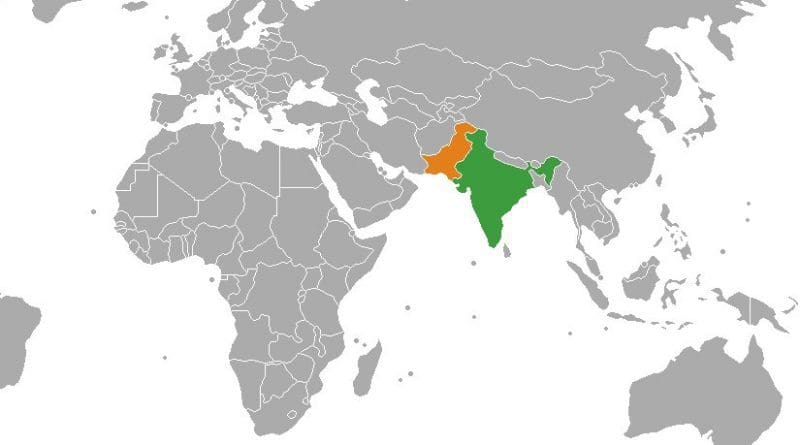India’s ‘Surgical Strike’ Across The LoC: A Preliminary Assessment – Analysis
By IPCS
By Angshuman Choudhury*
On 29 September 2016, the Indian Army’s Director General of Military Operations (DGMO) announced that India had conducted overnight pre-emptive ‘surgical strikes’ against terrorist targets along its Line of Control (LoC) with Pakistan. Immediately afterwards, Pakistan’s Defence Minister Khawaja Asif rebuffed the claims, stating that the Pakistan Army faced unprovoked small arms firing from the Indian side, following which it responded symmetrically, losing two of its soldiers. This sudden escalation of tensions comes ten days after the terror attack in Uri, Jammu & Kashmir, India.
In light of the limited details provided by the DGMO and the disjointed media narrative, it would be useful to discuss the feasibility of a cross-LoC counter-insurgency operation for the Indian armed forces.
Several media reports claim that the targets were located 500 metres to 2 kilometres inside Pakistan Occupied Kashmir (POK), in four sectors beyond the LoC. However, what is known from the DGMO’s statement is that the Indian Army hit specific militant positions or ‘launchpads’ that were placed ‘along’ the LoC. Thus, it remains unclear whether the Indian forces did in fact enter territory controlled by Pakistan or simply fired from the back foot. If it was indeed a ‘surgical strike’ then strategic cross-LoC force deployment becomes inevitable so as to maintain precision, stealth, and overall strike efficacy.
A surgical strike across the LoC by the Special Forces would demand both detailed planning and substantial pre-assault surveillance and reconnaissance. The critical targets and their immediate surroundings would have had to be pinpointed and assessed before the operation. It would be essential to determine optimal points for approach, a viable exit strategy, Pakistani military positions and locations of other non-critical infrastructure. This would have to be done to ensure maximum precision and stealth – especially in a non-conventional conflict theatre featuring an obscure mix of state and sub-state aggressors.
Given the non-uniformity and hostility of the terrain along the four sectors, reconnaissance for an offensive operation becomes a challenging and time-consuming task. Ideally, such a situation would warrant a strategic fusion of human intelligence (HUMINT), communications intelligence (COMINT), electronic intelligence (ELINT), and unmanned aerial reconnaissance. A surgical strike based on uncorroborated or un-specific intelligence would make the operation vulnerable to easy detection and subsequent retaliation by belligerents. Yet, the qualitative nature and degree of India’s intelligence-gathering approach remains unknown.
Some reports suggest the use of helicopters and paratroopers in the operation – components that further broaden the planning process. While usage of helicopters for airdrop of paratroopers ‘at’ the LoC is a possibility, any offensive air assault design inside POK would have had to factor in the Pakistan Army’s air defence capabilities. In this regard, the assumption that India would use attack helicopters – most likely Mi-17s or Mi-35s – is improbable, even for airdrops. These helicopters are very loud; nullifying the stealth advantage crucial for a night-time surprise assault. But, if it did so, it could imply that reconnaissance was strong enough to keep the close air support component of the operation outside the range of Pakistan’s air defence systems.
Additionally, the scarce details provided by the DGMO indicate limited operational deployment (assuming the surgical strike did happen). The categorical statement that the Indian Army has no plans to carry out similar strikes in the near future implies that India does not want any serious escalation of conflict across the border. The strike was a one-time, highly specific counter-terrorist operation within India’s ‘strategic restraint’ doctrine and is not intended to trigger a broader mobilisation of troops on either side of the LoC. Simultaneously, it is aimed at displaying India’s capability to hit specific targets in and around the LoC at will. Contrary to what many analysts have argued, this surgical strike does not seem to fall within India’s ‘Cold Start’ doctrine.
Despite numerous comparisons being made to 2015’s counter-insurgency operation across the India-Myanmar border against NSCN (K)-led insurgents, the political and strategic context of the India-Pakistan LoC remains distinctive. In Myanmar, India had the support – or at least the assured neutrality – of the foreign government. The hot pursuit operation was even reportedly based on intelligence inputs provided by Myanmar’s military. This is not the case in India’s western frontier, where New Delhi would have had to rely on unilateral intelligence covering both militant and military positions inside POK. Furthermore, unlike POK, force deployment is heavily limited in Myanmar’s north-western sector, permitting a more comprehensive assault design.
At this point, it is difficult to determine the nature of targets India might have hit. The DGMO said that along with the terrorists, Indian forces also inflicted “massive casualties” to “those providing support” to primary terrorist targets. The details of these secondary targets remain unclear. Moreover, despite the affirmative statements made by both governments, the body count on either side is still doubtful. Neither army would want to divulge details that could galvanise public opinion and force either India or Pakistan into a war footing.
Thus, although the public announcement of a covert surgical strike at the LoC by the Indian Army is a significant development in itself, the scale of the operation remains dubious. The most critical of all the sketchy details available in the public domain is whether the Indian forces actually crossed the LoC – something New Delhi has not claimed to have attempted in decades. The Indian government is expected to divulge more details in the coming days, which would correspondingly shape the future threat scenario along the volatile India-Pakistan border in Kashmir and elsewhere.
* Angshuman Choudhury
Researcher, SEARP, IPCS
Email: [email protected]

